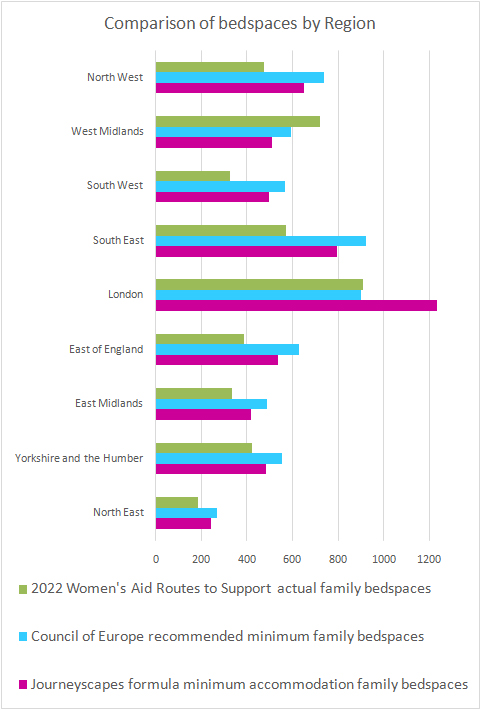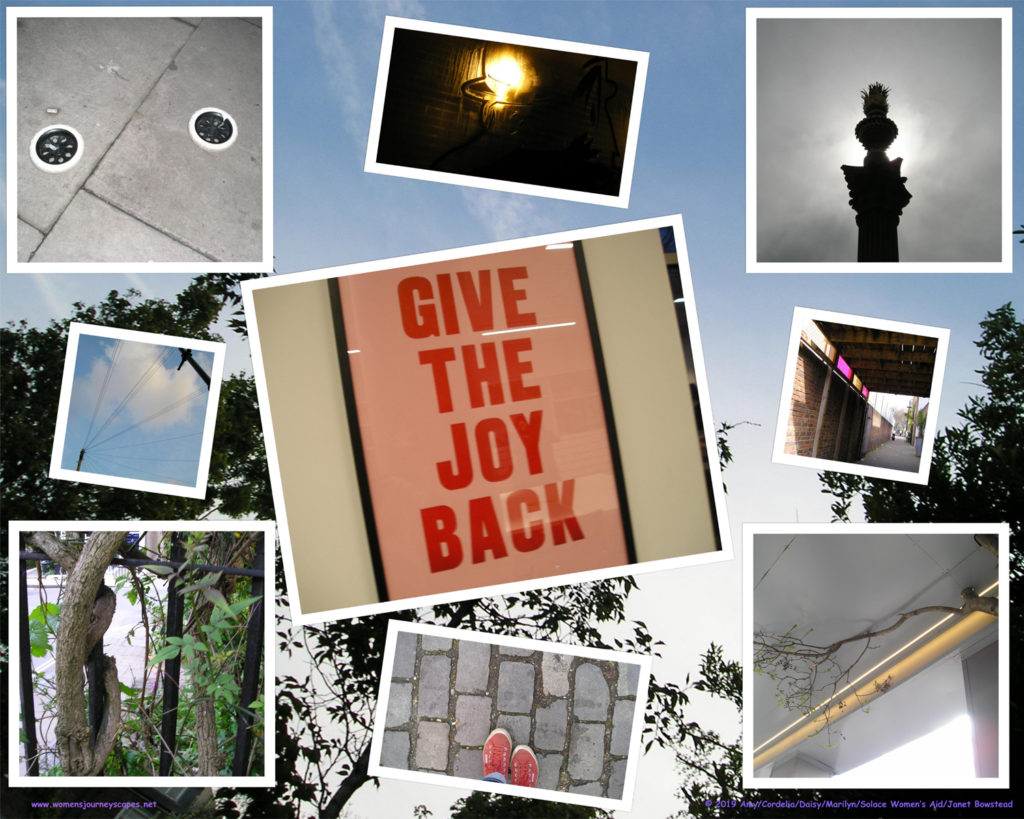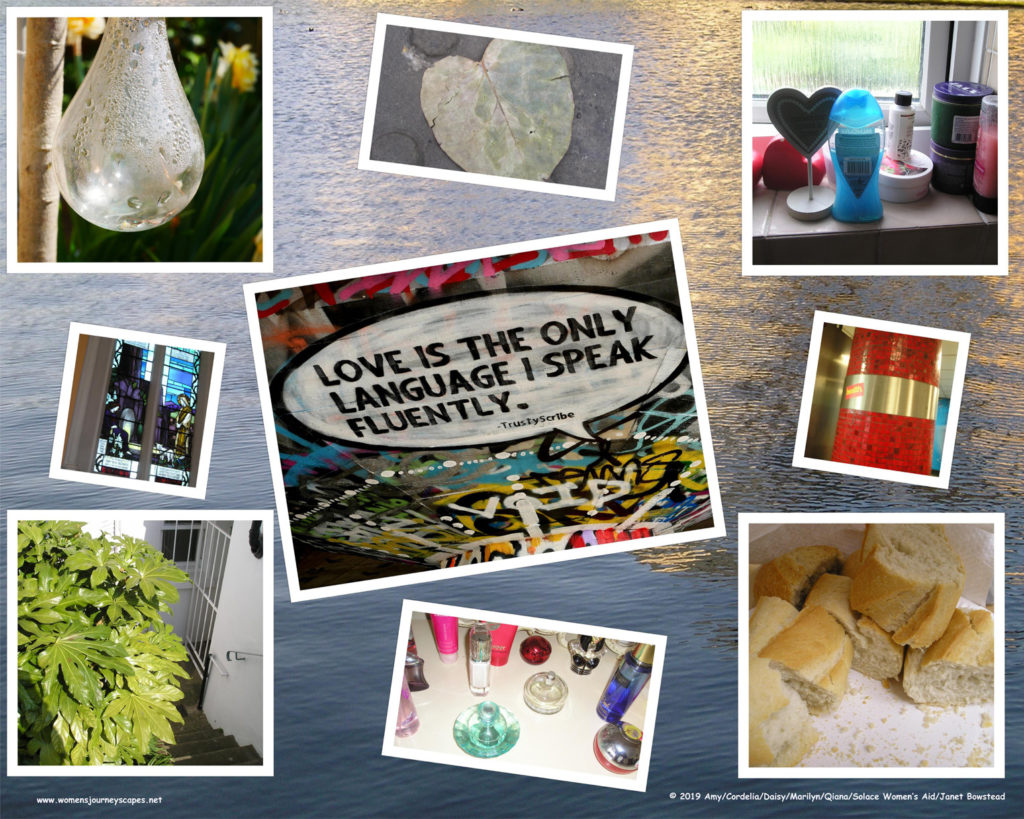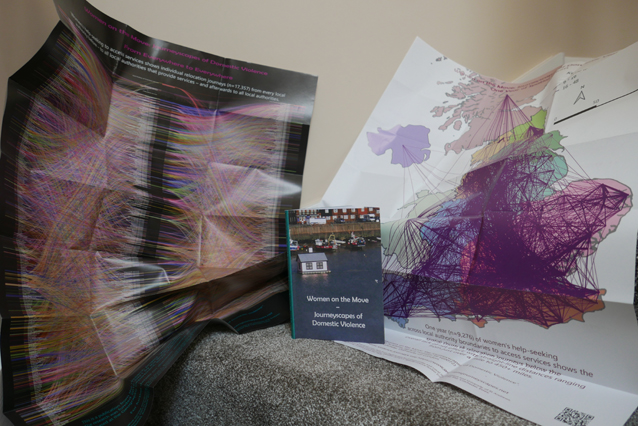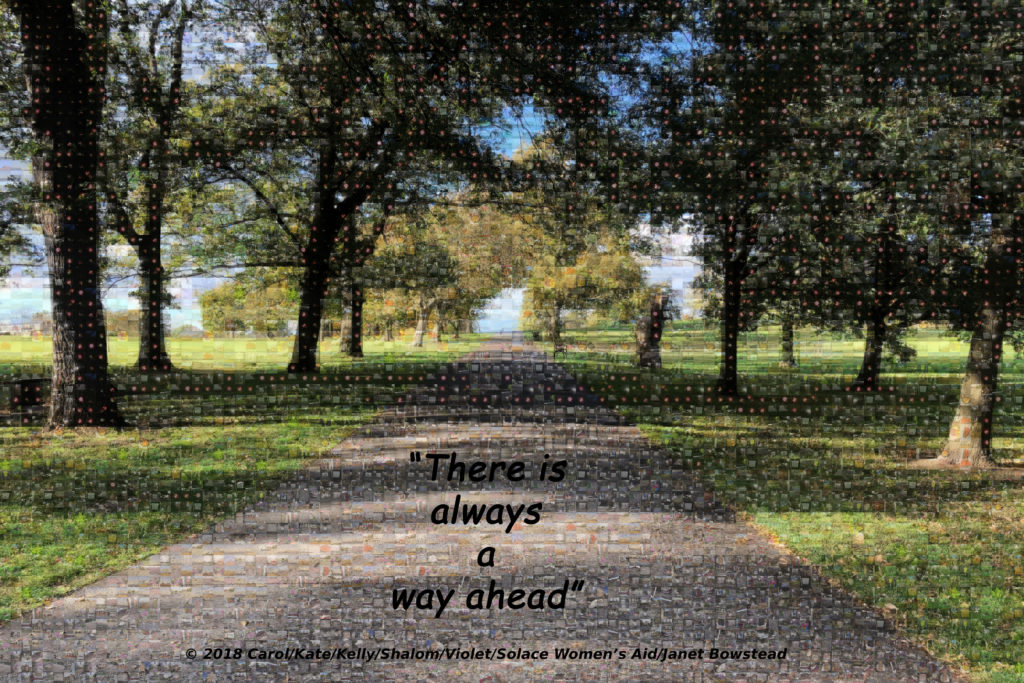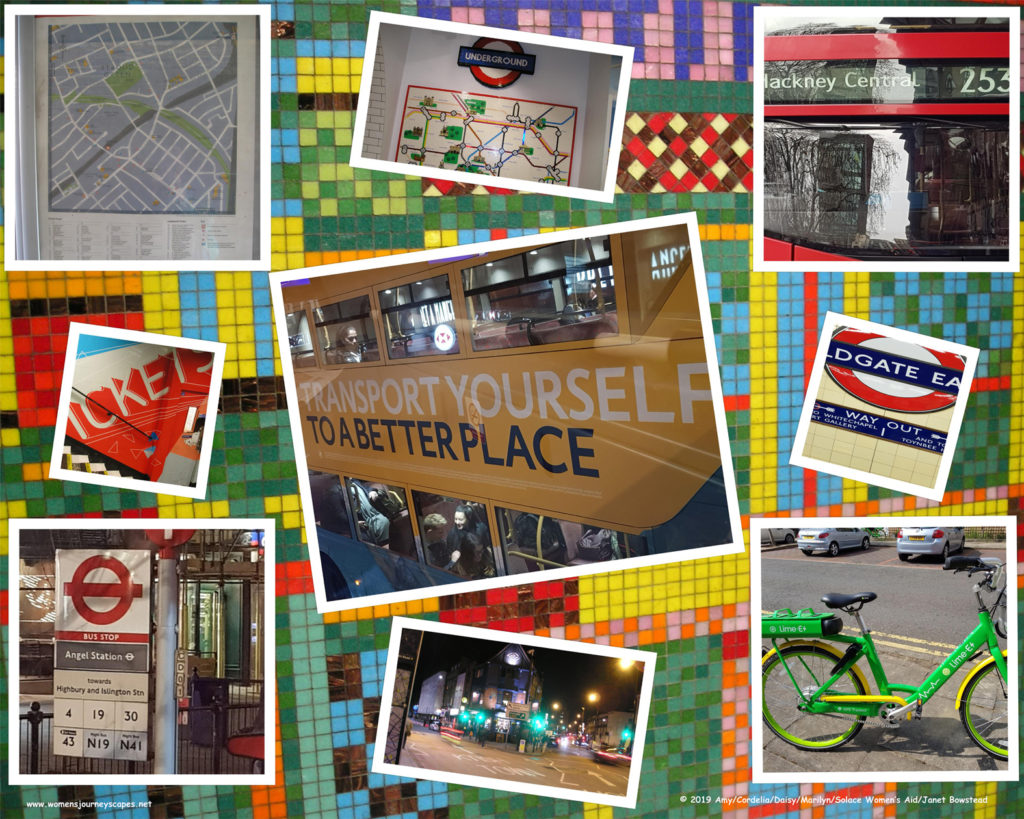The journeys of women and children away from violence and abuse are both practical and emotional.
Journeys may include steps forward – and steps back… Times when you feel that you are really moving; and other times when everything feels stuck.
Like any journey, it can help to know that others have travelled that route before you – it can be reassuring to hear their words of encouragement: to draw on the strength of their experiences.
The participatory creative work in this project provided time and space for women to communicate their experiences of forced relocation and tentative resettlement. Women in the groups drew ‘maps’ of their journeys, and took photographs to explore the twists and turns of their routes.
This short video shows some of their images and captions about their steps to a new life. As women were still at risk from abusive partners, their photographs for public display could not be identifiable. So they looked down at their feet – their little steps forward – their careful steps: as Amy put it. They took photos of their children’s feet – thinking about their journeys together. Favour highlighted that she and her son had had to pack just two small knapsacks for their escape – leaving everything else behind.
But women also saw positives in their steps forward to safety and freedom. Sarah saw a better life ahead for her and her sons – full of love, wealth, and smiles all round – and saw in some cobbled paving the metaphor that there is a space for everyone in this world. Amy saw the traces she was leaving in her careful steps forward – like footprints in concrete – and that she had options and choices of where she and her son went. Kate looked up at the bright lights of Electric Avenue, and Daisy at the beautiful colours of a sunset over the sea.
They all saw steps forward to a new life – and wanted to communicate that to other women escaping abuse.

